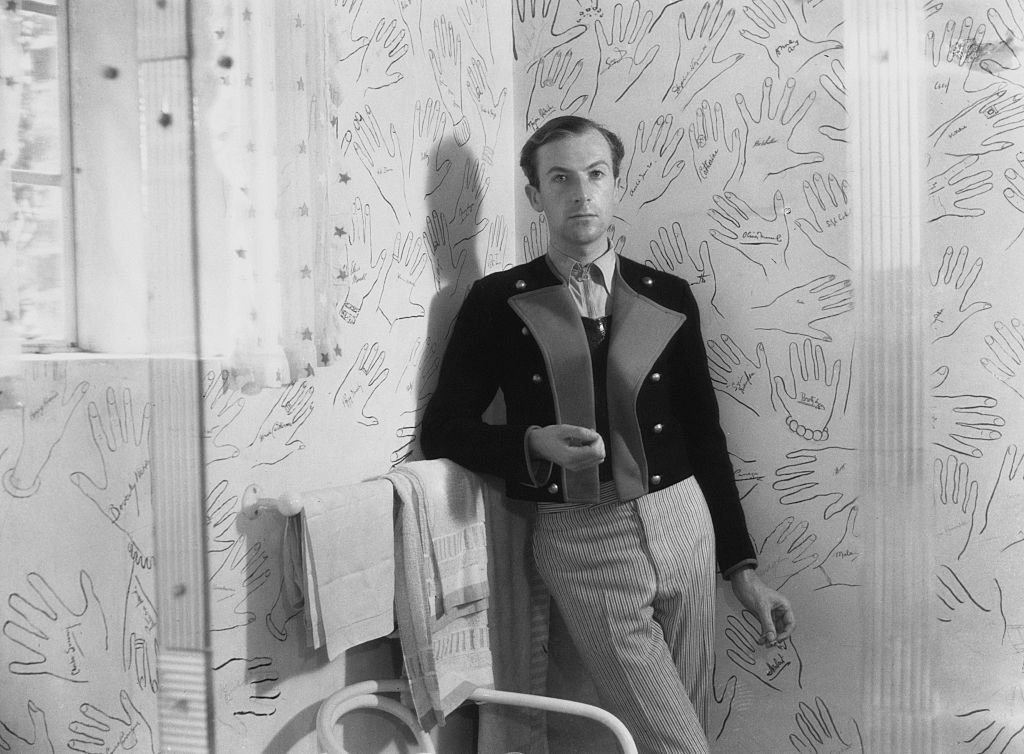
Prince Harry and Meghan Markle shared a set of engagement photos with the world on Thursday, creating renewed excitement for their royal wedding on May 19.
"Prince Harry and Ms. Meghan Markle have chosen to release official photographs to mark their engagement," the Kensington Palace Twitter account said in a thread. The images were taken just this week by fashion and celebrity photographer Alexi Lubomirski, at Frogmore House in Windsor.
Prince Harry and Ms. Meghan Markle, December 2017. pic.twitter.com/HrAc9FeN51
— The Duke and Duchess of Cambridge (@KensingtonRoyal) December 21, 2017
The news reminded us of a more famous Royal photographer, featured on the The Crown. Though Cecil Beaton passed away in 1980, before Prince Harry was born, a fictional version had a cameo on the Netflix hit, one of the streaming platform's most expensive undertakings.
The fictional Beaton, played by Mark Tandy, takes Queen Elizabeth II's portrait in the final episode of Season 1, and Prince Harry's grandmother, did indeed sit for a portrait with Beaton after her coronation in 1953. Beaton had attended the coronation ceremony, taking notes and making sketches from the balcony.
That is arguably his most famous photograph of the Queen, but it was hardly the only one. He became an unofficial court photographer for the royal family in 1937, after photographing the wedding of the Duke and Duchess of Windsor—Elizabeth's uncle Edward VIII, who abdicated the throne so he could marry Wallis Simpson, an American divorcee.
That scandalous abdication and the disgraced Edward VIII (featured heavily on The Crown) tarnished the image of the Windsors. Beaton is credited with restoring some glory to the Royal family with his photographs of Elizabeth's mother, the wife of the new King, George VI, Edward's younger brother.
In 1939, Beaton recalled in his diaries, he received a call from Buckingham Palace: "The telephone rang, 'This is the lady-in-waiting speaking. The Queen wants to know if you will photograph her tomorrow afternoon.' At first, I thought it might be a practical joke...but it was no joke. My pleasure and excitement were overwhelming. In choosing me to take her photographs, the Queen made a daring innovation...my work was still considered revolutionary and unconventional."
The two had an istant rapport, and the official portraits were a stunning success, creating a modern image for the embattled family. In 1942, he photographed her daughter, Elizabeth, then a 16 year old. Beaton photographed the princess again for her 18th birthday, and wrote:
"Princess Elizabeth's easy charm, like her mother's, does not carry across in her photographs, and each time one sees her one is delighted to find how much more serene, magnetic, and at the same time meltingly sympathetic she is than one had imagined...One misses, even in colour photographs, the effect of the dazzlingly fresh complexion, the clear regard from the glass-blue eyes, and the gentle, all pervading sweetness of her smile."
The photographer continued taking photos of the family over the next few decades, including each of her children soon after they were born: Prince Charles in 1948, Princess Anne in 1950, Prince Andrew in 1960 and Prince Edward in 1964. (There is an entire book of portraits of Queen Elizabeth by Beaton.)
Beaton was an inspired fashion, portrait and war photographer, one of the most celebrated of his day. His shot of three-year-old Eileen Dunne, on a hospital bed after the blitz, became a cover of LIFE magazine. But he's perhaps most famous for the portraits he took of everyone who mattered between 1930 and 1970 (including Coco Chanel, Albert Camus, Jackie Kennedy, Grace Kelly, Marilyn Monroe and the Rolling Stones) and the sets and costumes he designed for theater and film, including his Academy Award-winning costumes and set decoration for the 1964 film My Fair Lady.
The 2014 book Cecil Beaton: Portraits and Profiles looks back at some of his most iconic images. He recorded his observations (and famously vicious wit) in diaries and journals, his comments often less generous than the highly flattering photos he took.
The last time he photographed Queen Elizabeth II in 1968, he was less charmed than he was in 1942. "The difficulties are great," he wrote. "Our point of view, our tastes are so different. The result is a compromise between two people and the fates play a large part."
Uncommon Knowledge
Newsweek is committed to challenging conventional wisdom and finding connections in the search for common ground.
Newsweek is committed to challenging conventional wisdom and finding connections in the search for common ground.
About the writer
Stav is a general assignment staff writer for Newsweek. She received the Newswomen's Club of New York's 2016 Martha Coman Front ... Read more
To read how Newsweek uses AI as a newsroom tool, Click here.








